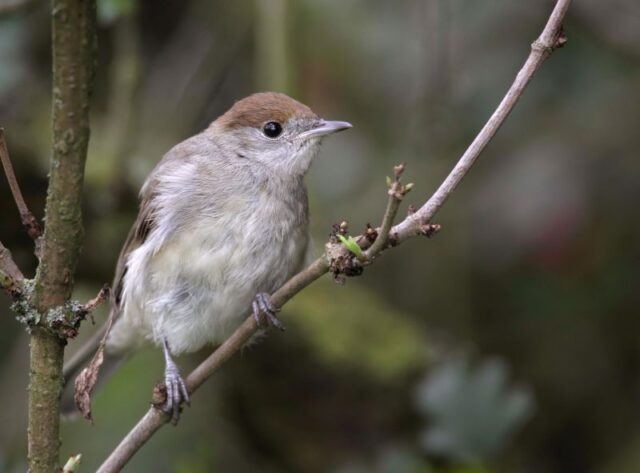Research, from the British Trust for Ornithology (BTO), in collaboration with Oxford University and Max Planck Institute, Germany, has uncovered the unusual migration of Blackcaps into UK gardens for the winter months.
It has long been known that birds move south for the winter, indeed, those birds that arrive here for the winter months, such as Redwings and Fieldfares that are escaping the worst of a Scandinavian winter, move south into the UK, while our summer visitors head south for warmer climes anywhere from southern Europe to South Africa.
That some Blackcaps do spend the winter in the UK isn’t new information but the fact that they originate from at least seven different countries to the east and south of the UK is. Until recently it was thought that our wintering Blackcaps had their origins in southern Germany. We now know that most birds come here for the winter from France, with other from as far away as Spain and Poland too.
The movement north from Spain is particularly intriguing as southern Spain and the Mediterranean coasts are the main Blackcap wintering locations and much nearer to those north bound birds than the UK. It is thought likely that our increasingly warmer winters and widespread garden bird feeding enable these Blackcaps to survive – access to these resources has provided them with a distinct advantage, enabling them to return to their breeding sites around a week before their southern migrating rivals.
Greg Conway, Lead Scientist on the project at the BTO, said, “Over four winters, a network of dedicated ringers marked over 600 wintering Blackcaps with individual colour ring combinations, generating thousands of sightings from Garden BirdWatchers, and we tracked the full migration of 30 birds with geolocators. The project owes its success to this close partnership between research scientists, BTO ringers, Garden BirdWatchers and the public.”
Rob Jaques, BTO Garden BirdWatch, said, “It is great that our Garden BirdWatchers have played such a pivotal role in reporting where these colour-ringed Blackcaps (two rings on each leg) have been seen. It would be even better more members of the public could look out for them this winter and tell us where they are via our free Garden BirdWatch survey.”




